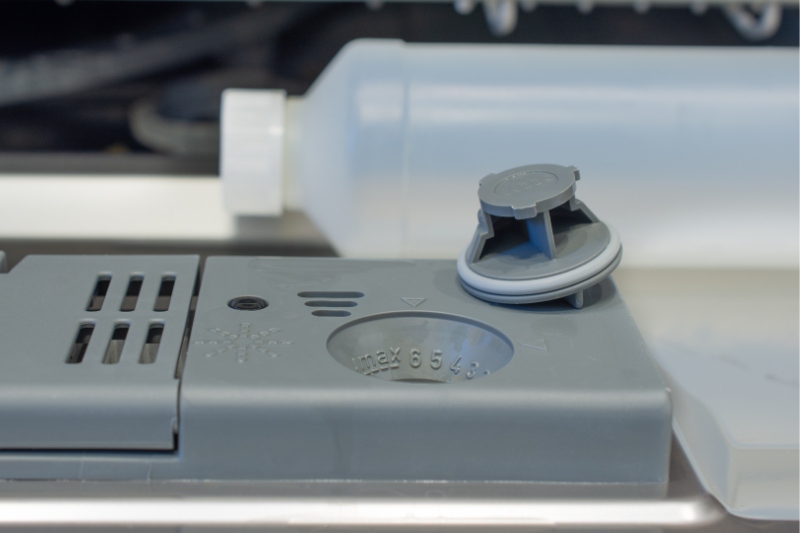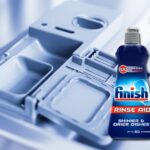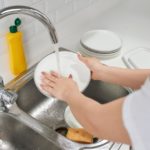Dishwashers are among the most blessed of items. The soulless drudgery they’ve rescued us from should render us almost giddy with appreciation.
Alas, dishwashers don’t get the gratitude they warrant. In fact, they get positively harangued if the dishes they dutifully deal with come out any less than immaculately clean.
Poor dishwashers. But hang on. You can give them a much-needed hand by keeping them topped up with rinse aid.
Yes, I know rinse aid’s one of those things that are forever running out. The fab news is that you can make it yourself.
The even better news is that homemade rinse aid scores big in the eco-friendly stakes, being gloriously free of the harmful chemicals that sometimes plague commercial varieties.
Go on, it’s the very least that depressed dishwasher deserves. There’s even a choice of options. So, roll those sleeves up, and let’s get discovering.
What Does Rinse Aid Actually Do?

It will come as a surprise to only a very few of you that rinse aid aids rinsing. Sometimes, things are named after what they do. If only this were always the case.
Anyway, this stuff precipitates effective rinsing and, as it happens, drying too. It does this by using surfactants to reduce the surface tension of water, so it runs off more readily.
You end up with fewer water drops hanging around and leaving marks. This is an especially helpful assist in areas of hard water, where droplets can deposit scale on drying dishes.
However, as we’ve mentioned already, commercial rinse aid is often stuffed full of chemicals that are not so great for the environment.
To make matters worse, a lot of these chemicals stay on the crockery after washing, so you and your family will often end up ingesting more than they bargained for.
So, who’s up for some sodium hydroxide salad? Methylchloroisothiazolinone and chips, anyone?
Most dishwashers have a compartment for rinse aid just next to where you put the detergent. There’s usually a dial that determines how much rinse aid gets dispensed into each dishwashing session.
The setting you arrive at for that will depend on the water conditions for your area, and is usually reached through trial and error.
Option 1: Vinegar
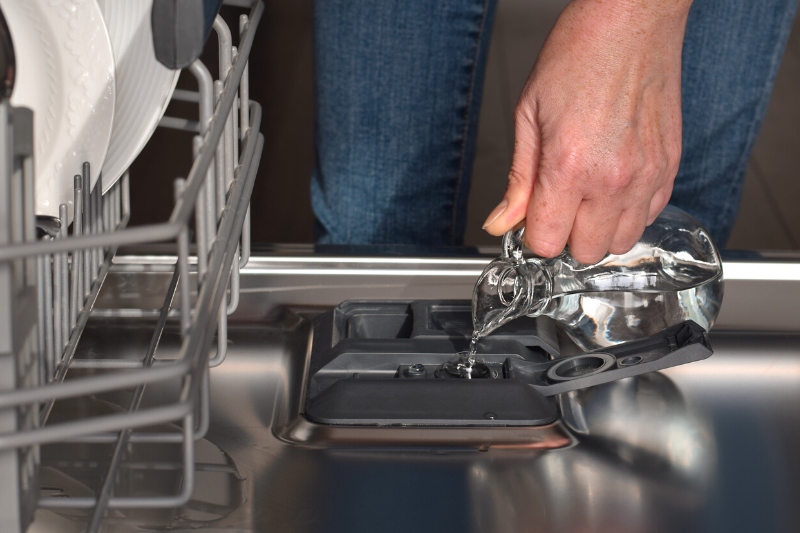
In the world of natural cleaning options, you’re never more than a sentence or two away from vinegar.
So all-conquering is this household hero that in my house it’s called The Acetic Avenger. OK, it’s not, but only because vinegar’s a perfectly good name for it already. And if I ask somebody to pass me The Acetic Avenger, I just get a funny look.
In any case, all you need to do is pour vinegar into the rinse aid compartment and you’re done. White vinegar works best. And you want to stick to an acetic acid level of less than 5% or it can corrode any rubber fittings in the dishwasher.
One other tiny caveat with vinegar. It makes your glasses sparkle, probably more effectively than commercial rinse aid.
However, it doesn’t assist the drying process like commercial rinse aid does. But you can always shake it off, as Taylor Swift so fervently urges.
Option 2: Lemon Juice

The humble lemon is another fabulously helpful ally in the war against household grime, and one that not enough people know about, more’s the pithy.
I’ve tried to pay it the respect it’s due by getting everyone to use the name The Pipped Protector, but you should see the faces that greet this one. Don’t know why I bother.
This time, it’s citric acid that does the rinse aid trick, enabling clear and rapid water run-off from your dirty dishes.
You can introduce it into the dishwasher either by putting lemon juice into the rinse aid compartment, or, if speed’s your middle name and you have no time for any juicing antics, you can put half a lemon in among the crockery. Do check for pulp afterwards though.
Option 3: Citric Acid
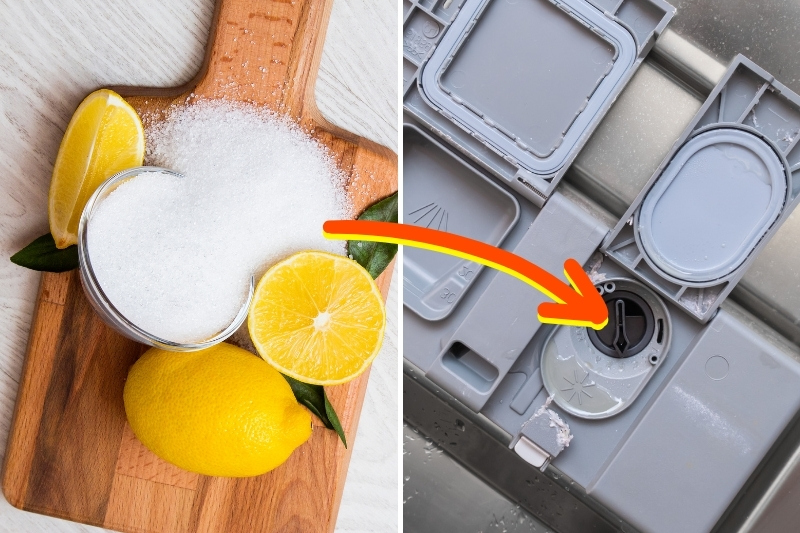
You can cut to the citric chase by just using powdered citric acid and dissolving it in warm water, then pouring it into the rinse aid dispenser. Be sure to make a fresh batch each time, as if left in water for a long period of time citric acid can lose its potency.
You can also add a few drops of essential oil, if you want your dishes to smell like they’ve made an effort for dinner. Be sure to keep it minimal though, as essential oils can collect and create a residue in your machine.
Option 4: Hydrogen Peroxide

Yes, I know, this sounds like a heavy-duty chemical, which is what we’re trying to avoid, right?
Well, the good news is that hydrogen peroxide is a cleaning agent that’s a lot less harmful than most as it’s chlorine-free, getting its cleaning power from good old oxygen. Put a teaspoonful into the rinse aid dispenser and this will give excellent results.
Be wary of putting any cloth in there with it though, as it will have a bleaching action on any textiles in the machine.
This may be a welcome side-effect, however, like if you’ve got a white flannel in there that needs pepping up. In which case, carry on.
Why Use Homemade Rinse Aid?
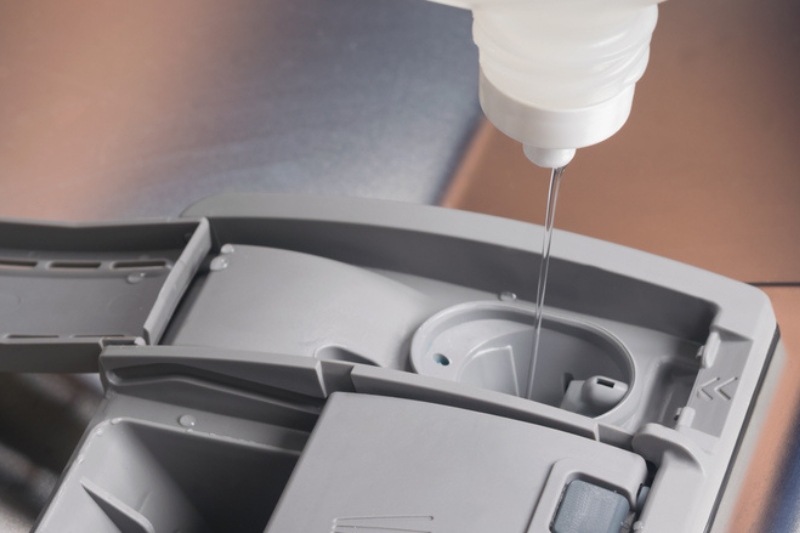
There are five major advantages to using homemade rinse aid. These are as follows:
- Safer for the environment – The fewer harmful chemicals we put into the biosphere, the better. Bit of a given, this, but it bears repeating.
- Safer for you – We weren’t really designed to deal safely with the chemical load we’re surrounded with, so anything we can do to reduce it has got to be a good idea. You’re a lot less likely to be allergic to vinegar than some of the artificial colours and fragrances used in commercial rinse aids, too.
- Cheaper – Vinegar and lemons are not budget busters.
- Easily available – Most people can lay their hands on things like vinegar most of the time.
- Effective – These homemade alternatives can be every bit as powerful as the store-bought ones.
What Are the Safest Commercial Rinse Aids?
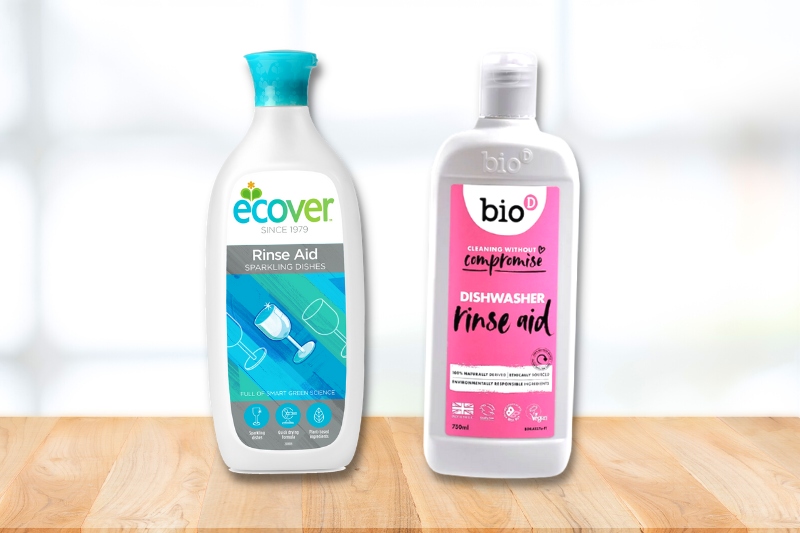
If you’re determined to buy yourself a commercial rinse aid, there are one or two that contain the fewest harmful chemicals.
These include biodegradable and plant-based products such as those made by Ecover and Bio-D. These often share advantages with homemade rinse aids, such as being free from artificial fragrances and so forth.
What Are the Alternatives to Using a Rinse Aid at All?
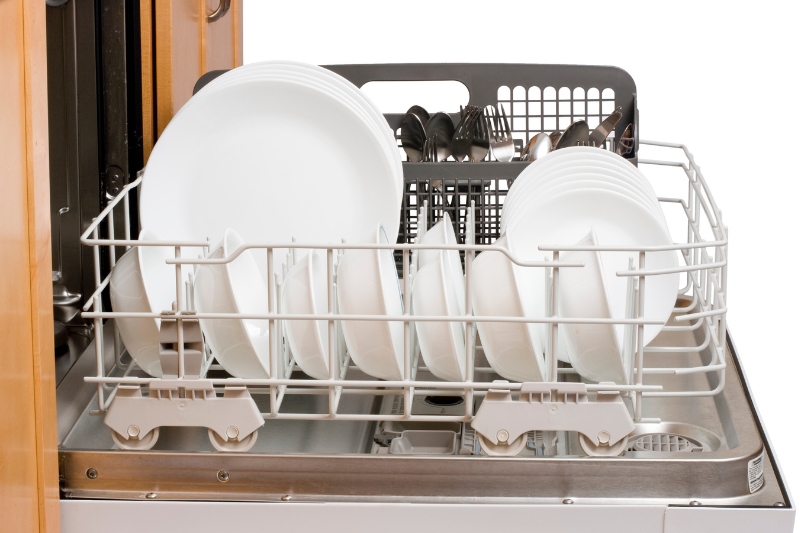
If you’d rather do without rinse aid altogether, you can get away with this to an extent in some areas. A lot depends on the water softness in your region.
The biggest tip to take on board is this: don’t overload your dishwasher. And when it comes to loading it, do it with care.
Yes, I know that the subject of dishwasher loading can be a fraught one in some households, bringing up as it does disagreements over technique that are somehow shorthand for incompatibilities in worldview.
But this does warrant some attention. Make sure that plates and bowls have spaces between them and that cups and glasses are securely upside down.
Then, when unloading, do the bottom shelf first. If you do the top layer first, some residual water may splash onto the bottom layer. Big deal, you may think. Such a cavalier attitude may help with reducing your blood pressure. But you may end up with scale marks on your eggcups. Your choice.
Choosing Natural Rinse Aid Alternatives
It’s always a big win when you can strike a blow against the chemical tide that threatens to swamp us.
This is especially the case when you can save money at the same time, together with experiencing no drop in quality. That’s a win-win-win. You simply can’t argue with that.
So, come on dishwasher, let’s fill you full of the good stuff.

Martin’s life revolves around films, dogs and food, but rarely all at the same time. At least two out of these three like to give clothes and furniture a hard time, and Martin enjoys discovering and writing about new ways to stop them doing their worst.
